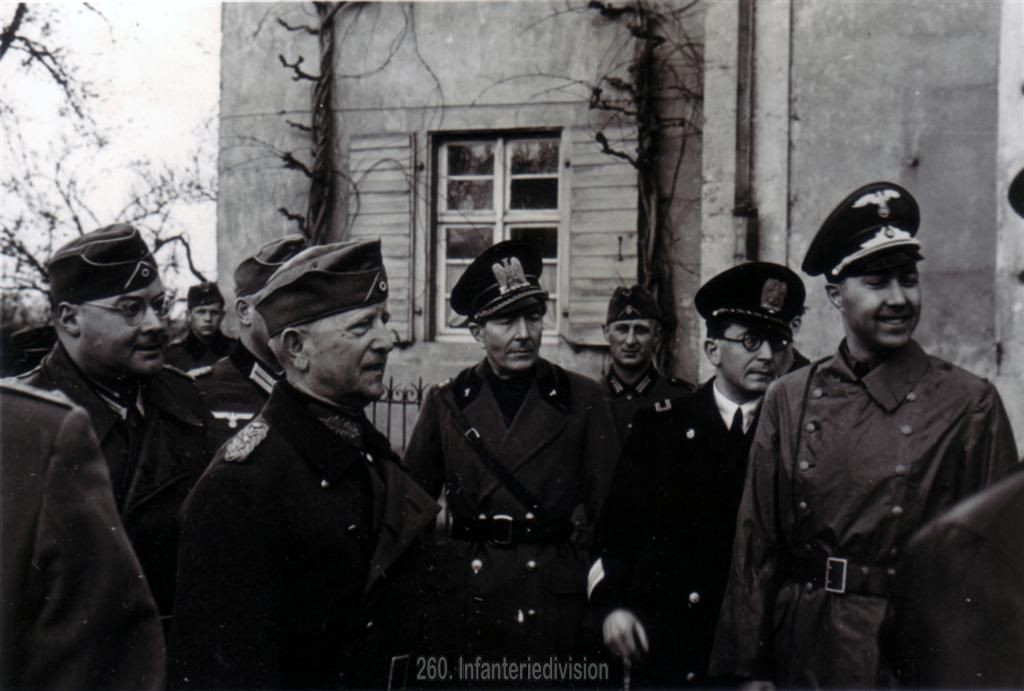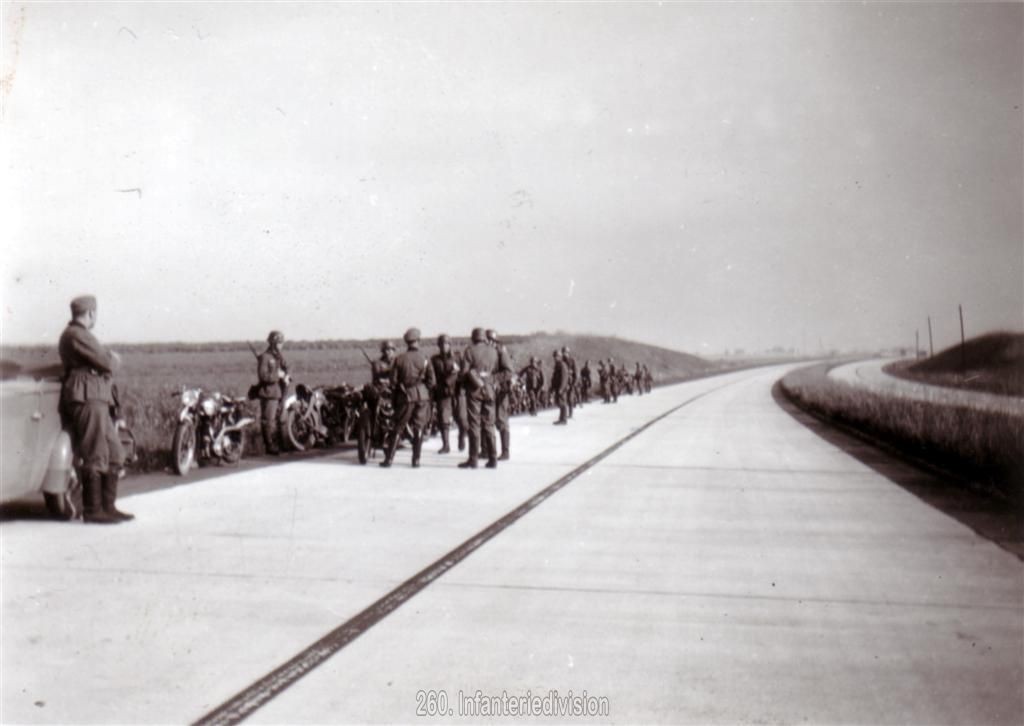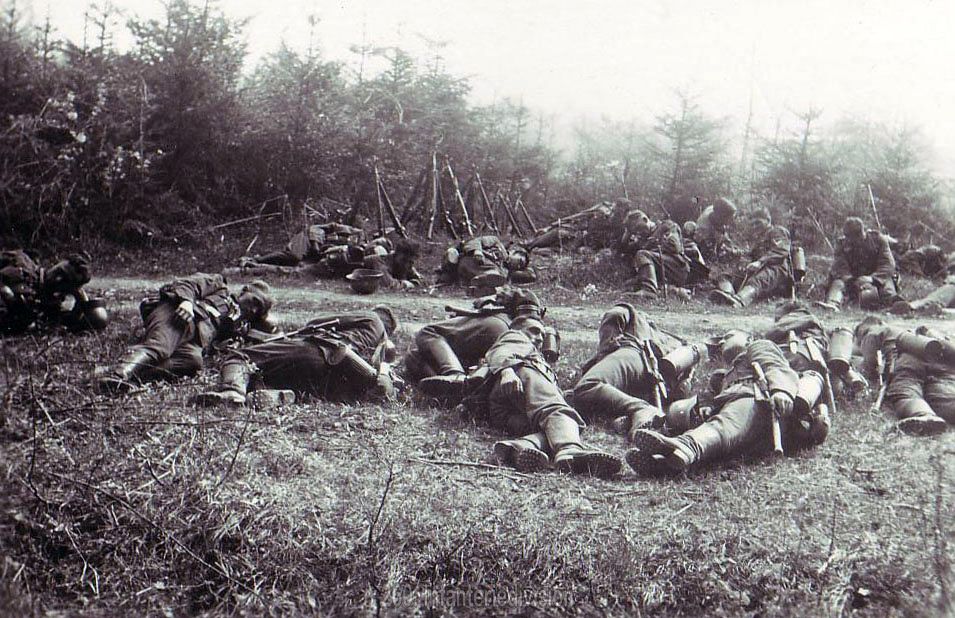A few days after the outbreak of war, our Infantry Regiment 480, composed largely of reservists, was ready to march.
On September 11, 1939, the time had come: loading in Nuremberg, departure in the direction of the West. (Author’s note: My grandfather was probably not yet with Infantry Regiment 480 here, he was just completing his basic training).
At first we did not get to see the Westwall and its bunkers. Our first astay from September 12 to 26 was rather in Hüsingen near the Swiss border. We were once more corps reserve and then in readiness to repel a possible French attack via Switzerland.
From 27 September to 22 October we were in Haagen as regimental reserve. Now began our actual „bunker time“, the defensive readiness on the Upper Rhine.
Place names never heard before became unforgettable memories: Friedlichen, Kirchen, Märkt, Haagen, Eimeldingen. Each name a term with which countless beautiful hours can be forever associated.
What we built trenches and positions in that hard winter 1939 / 1940, we waved to the French and also fired at them, just as they fired at us. What were those bunker Christmases, in our free time we made many tender bonds. Volumes could be written about this unforgettable time. (Author’s note: my grandfather was a member of the 2nd Company / Infantry Regiment 480 from December 18, 1939).
It came to an end on April 18, 1940. Our company was in Eimeldingen as regimental reserve when the order to leave arrived, which initiated the great postponements of the next days and weeks. The day was also marked by high attendance: a delegation of Italian officers took their lunch in the Guesthouse „Zum Ochsen“.
Our company provided a choir for a table concert. We must have sung well, because as a thank you one of the Italians gave a speech characterized by southern temperament in which he praised the German-Italian brotherhood in arms.

Italian officers visit the division
In the evening of that day – it became a fresh, clear early spring night – we started. At first, we did not go very far. A single night march brought us via Lörrach to the area of Rheinfelden-Steinen. Our company took up quarters in Karsau and Beuggen. Thus began a new „wartime idyll“ for us. The young Rhine, the young spring, the young girls – the old castle, the old sites on the Rhine: Säckingen, Rheinfelden – and the old story: company exercises…and in between again many personal experiences, impressions and memories. So the days passed, the first spring days of 1940, like a beautiful dream. On 03 May 1940, however, the dream was over. Four night marches brought us to the Donaueschingen area.
The sudden high demands on the march accustomed legs caused some discomfort. The morning after the first night march near Todtmoos in the Black Forest felt bad. But soon it turned out that everything was half as bad: the feet settled in, the body got used to the marches. It got better from night to night. Especially as the daytime accommodations improved as well. On May 7, 1940, we moved in singing to our final accommodation in Sunthausen near Bad Dürrheim.
It is 6 o’clock in the morning, our songs break in the silent streets of the city. Soon after, the whole company sinks into a deep sleep.
Another 10 days of permanent quarters follow. Again, a series of battalion exercises are conducted, which do not stop at Whit Monday. However, on the whole, a tranquil, peacetime existence.
On May 10, 1940, while marching to an exercise in Donaueschingen, we learn of the beginning of the war against France.
This is how the days of Sunthausen pass and the question becomes more and more urgent: Where are we deployed? On May 17, the „Hiking behind the Westwall“ begins anew. In the evening of this rainy day we leave Sunthausen and march at night to Stetten an der Donau. It brightens up after a few hours of marching and thus begins 4 nights of marching under a magnificent moon that shows us the wonder of German spring nights. It will be a splendid walking Valley up, valley down through the „Rough Alb“ with unforgettable landscape impressions. The cleanliness and friendly character of the Württemberg villages are captivating.
On May 21 we are loaded in Tübingen. Next to the Westbahnhof we lie for hours in the hot sun. The neighbors incessantly drag in whatever they have to give. At 4:00 p.m. the long transport train starts moving. It carries the first three companies of the Ist Battalion. Everywhere people are standing along the track waving at us. They wished us well, knowing that we were heading west, where the Wehrmacht had attacked 11 days ago.
At dawn on May 22, 1940, we drive through Hessen, then north to just outside Cologne. In Troisdorf suddenly sharp change of course. At an acute angle we turn from north to southwest. South of Bonn we cross the Rhine.
And then a splendid ride on the branch line that runs through many tunnels up the Ahr valley. The endless vineyards, laboriously laid out in often tiny terraces up to almost overhanging rocky peaks, accompany us for a long time. Eventually they give way to the meager soil of the inhospitable Eifel.
After exactly 24 hours of train travel, we leave the train in Bitburg at 16:00 on May 22. This small town has seen an endless number of troops pass through for days and is completely under the sign of this huge deployment.
On the same day we continue our march for 20 kilometers. At 10:30 p.m. we arrive in Greimelscheid (today: Lambertsberg), a poor Eifel village where we are to spend our last two nights under German skies.
Benno Tins



